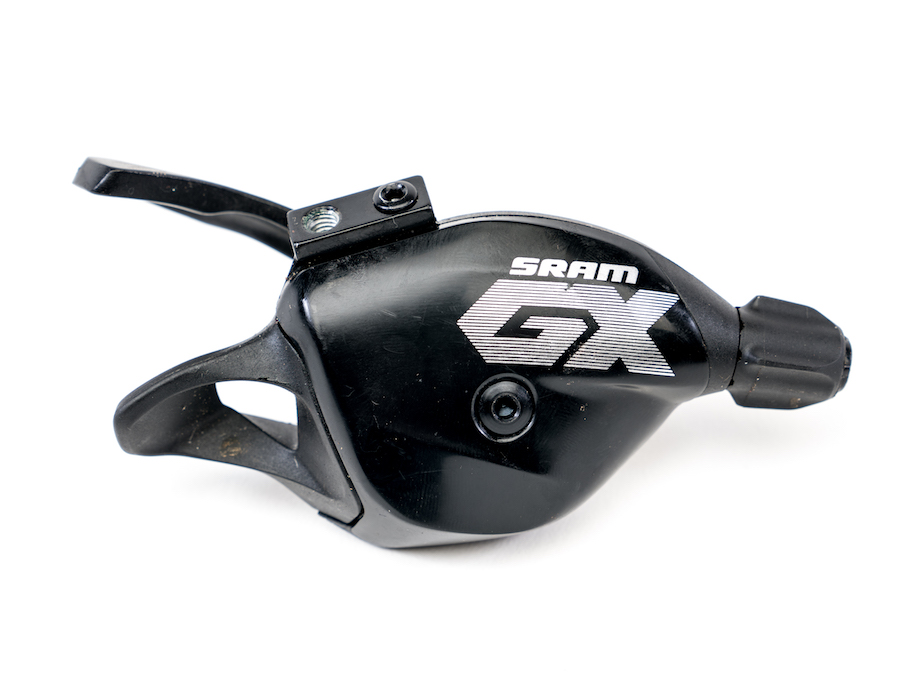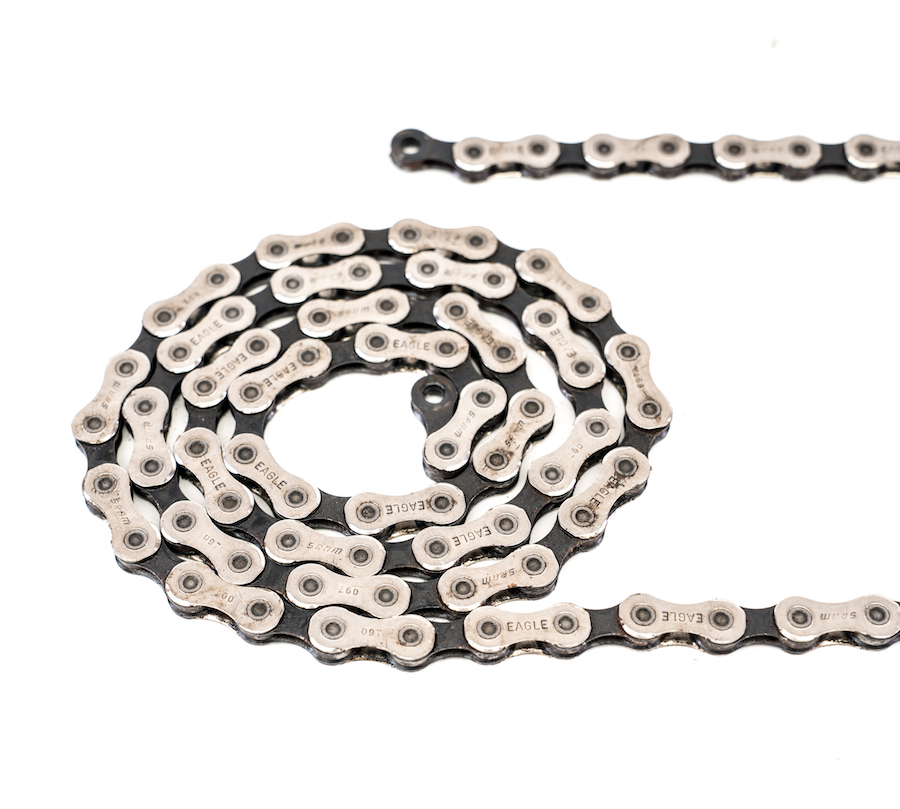Sram GX Eagle: Long-Term Review
Originally posted on February 6, 2019 at 4:20 amSRAM GX Eagle – Long-Term Review
By Eric McKeegan
SRAM’s first 12-speed drivetrains, XX1 Eagle and X01 Eagle and their 10-50 cassettes, brought the gearing range of multi-chainring drivetrains to the single-ring universe. Everyone who rode them had little negative to say, if anything at all.
But, unless you get the parts for free, there is no hiding from the fact the both XX1 and X01 are very, very expensive. And to make it worse, one of the main wear items, the cassette, is the second most expensive part of the Eagle drivetrains. Expensive as in $380 for X01 and $450 for XX1.
In defense of those prices, those cassettes last a long time if chains are swapped regularly. But even with long-lasting parts, these drivetrains were out of reach for a large portion of the riding public. Some riders passed on 12-speed for budgetary reasons and some because they couldn’t swallow the idea of a $400 cassette.

In 2017, GX Eagle appeared as a $500 complete drivetrain with all the range and most of the features of the more expensive Eagle groups. To put it in perspective, estimated retail for complete drivetrains (shifter, DUB crank, cassette, chain, derailleur) is $1,275 for X01 and $1,500 for XX1.
I’ve had a GX drivetrain on a personal bike for a year, and most of my review bikes in that period sported a GX drivetrain as well. I’ve ridden hundreds if not thousands of miles across all those bikes. Here are my thoughts.
Crank – $135
621 grams
The main thing to talk about here is the X-Sync 2 chainring. The previous X-Sync chainrings did a decent job keeping chains on, but they could be noisy when wet and gritty. They also didn’t have the best reputation for longevity. X-Sync 2 retains the narrow-wide design but adds some extreme looking shark-tooth profiles.
Somehow this new profile improves chain retention, improves longevity and makes for a much quieter drivetrain. Wins all around. I’ve also noticed these cranks stay relatively scuff-free. It is probably a combination of a low profile and a durable finish, but this crank-scuffer is impressed.

The crank on my personal bike is the GPX version, but the price and weight listed are for the new DUB version with the universal 28.99 mm diameter spindle. That is what most riders will see in the future, as it fits all bottom bracket standards with bearings that are big enough to last at least a riding season.
Cassette – $195
448 grams
The GX cassette is about the 88 grams heavier than an XX1 cassette. That is about the weight of three four-page letters with envelopes. Instead of the aluminum 50-tooth big cog and an intricately machined chunk of steel that makes up the XX1 and X01 cassettes, the GX cassette uses 11 steel cogs pinned to each other and a similar 50-tooth aluminum cog.
I haven’t managed to bend any teeth, something that happened regularly with NX and GX 11-speed cassettes.

Shifter – $40
120 grams
The GX shifter is a few grams lighter than the X01 and XX1 shifters. The more expensive shifters have an adjustable downshift paddle, but other than that, they look much the same. There is also little to set them apart with shifting performance. Even going back and forth between X01 and GX shifters, I couldn’t really tell why the X01 shifter is triple the price. Maybe the internals are more durable? Let’s chat again in a few years when we might see some wear. But it is doubtful the X01 will last three times as long.

I’m still not comfortable with SRAM’s shifter ergonomics. When sharing a clamp with the brake lever, I can never get them inboard enough to not run into my thumb knuckle, and the downshift lever is never in quite the right place. This is a minor quibble, but I am always surprised how much better Shimano shifters feel in the rare instance I end up on a bike equipped with a Shimano drivetrain.
Chain $30
238 grams
It’s a chain, it uses the excellent PowerLock connecting link, and it is half silver and half black. Other than developing easily removed surface rust after being hung up for a month after a wet ride, there is little to discuss here. It shifts well, I’ve never broken one, it is cheap enough to replace early and often.

Derailleur – $110
290 grams
Like the rest of the GX group, the rear derailleur has most of the features of the more expensive derailleurs, with a small increase in weight and a substantial decrease in cost.
Cost savings are found in the steel cage rather than the aluminum or carbon on more expensive models. The pulleys have cartridge bearings, a surprise at this price where I expected bushings in at least one pulley. The clutch is SRAM’s latest Type 3 which is said to be smoother and quieter than the previous two versions.

Conclusions
After a year on various GX groups, I am of the opinion that SRAM has created a new standard for high-performance, mountain bike drivetrains. Perhaps the most sensitive, princess-and-the-pea among us could detect a difference between GX, X01, and XX1 while riding, but I gave up caring if I could or not. The performance really is that close. Putting GX Eagle into a cost/weight/performance comparison with anything else on the market will see GX winning every single time.
There are a few complaints. Bigger cogs spaced closer together require smaller tolerances, and even minor issues like a slightly bent hanger or out-of-adjustment b-tension screw can make for glitchy shifting. The rear derailleur also sticks out more than I’d like and is much more prone to rock strikes than Shimano’s low-profile rear changers.
New-bike buyers may be the biggest beneficiaries of the low-cost GX Eagle drivetrain. I’ve already noticed a trend for better suspension, brakes and/or tires matched up with a GX drivetrain on even expensive carbon bikes. GX Eagle only carries an approximate half-pound weight difference, total, over the more expensive groups, with zero noticeable loss of performance. In fact, this group might be bad news for sales of the more expensive X01 and XX1.
I wouldn’t hesitate to recommend GX Eagle as an upgrade for riders looking to join the single-ring-drivetrain ranks. New bike buyers, there is no need to shy away from a bike with this drivetrain, even at higher price points. Well done, SRAM.